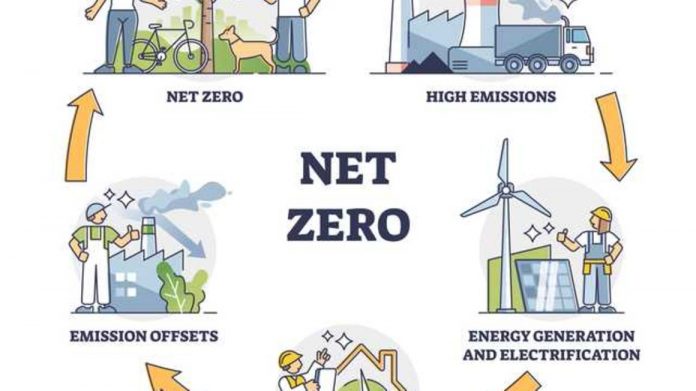’Net-zero’ pledges have been made globally over the past few years, committing organisations to manage greenhouse gases emissions.
In 2021, more firms and governments committed themselves to becoming net-zero before 2050 with the aim of fighting climate change.
Net-zero targets are a critical tool to fight climate change and stakeholders are pushing companies to make commitments on net-zero targets.
Net zero emerges from situations where greenhouse gas emissions from human activity balance reductions. This means that, although carbon dioxide emissions will still occur, an equivalent quantity is removed from the atmosphere.
When it comes to companies committing to net-zero or climate neutrality, it’s clear that the dial is moving towards firms that are setting climate-positive or carbon-negative goals. Climate positivity will be helpful to the planet in two ways:
It will help us mitigate climate chang but more importantly, it will help reverse degradation that has already occurred. The expectation is that companies will declare that they will be net-zero at some point in the distant future, and establish realistic targets that will be achievable.
As businesses engage in climate change efforts, it is essential to realise that companies need to move away from one- fits-all or generic strategies. Instead, different companies will require different interventions to achieve their emission targets.
Carbon offsets have been in the headlines on whether they meet the threshold for companies to claim to get to net-zero through offsets. For sure, there is merit in using offsets, and from my view, the bigger question should be about the offsets themselves instead of if they count for the net-zero ambitions.
The concern on the offset schemes is that many corporate net-zero targets heavily depend on them, rather than corporates taking rapid action to decarbonise their value chains where accountability and influence are highest. Carbon offset projects often generate a greenhouse gas credit, reduced, avoided, or sequestered unit of carbon dioxide.
Read also: How interests group can drive eco-growth
Companies will then use investments in offsets to enable them to claim climate neutral, carbon neutral, or climate positive. From my perspective, for offset projects to make sense, there should be a well-articulated and real reductions of carbon. The project should have proper monitoring, verification and well-defined ownership. Where possible, tasks leading to the offsets should be scalable and have co-benefits such as biodiversity protection, impacts on livelihood and improves other habitat sustainability parameters.
To build traction beyond net-zero to climate-positive or carbon-negative goals, governments, the private sector, civil society and academia must work together to enable a faster transition. To achieve this, three key enablers need to be in place.
One, governments must shift subsidies and financial support away from fossil fuels to clean energy and low carbon technologies, cut tariffs on climate-friendly practices and goods, and take adequate measures to ensure a just transition.
The second intervention should be directed to corporates. Fast-tracking climate change mitigation and adaptation should be incentivised to help scale existing proven solutions and develop new sustainable technologies. Coming up with an enabling environment in the form of standards and policies will go a long way in helping the transition.
Finally, financing is crucial for creating resilient supply chains and infrastructure that can help advance climate resilience, sustainable food production and secure water supplies. The funding should be structured to enable the transition to carbon-neutral and beyond.
The journey towards net-zero is not an easy one for companies. This is due to the lack of knowledge and necessary financial resources to aid the business to transition. In addition, various challenges come with decarbonising depending on the company’s geographical location, size and the sector. To overcome the challenges and reach net-zero, businesses should consider the following:
The C-suite should be diligent with its efforts to decarbonise. How? Understanding the best practices, how emissions impact the value of the business and its competitiveness, setting out the targets required to meet net-zero and developing a credible carbon offset system.
Secondly, the governance structure should remain accountable for driving the strategy through the entire company and beyond. This can be done by establishing a set agenda for net-zero emissions and assigning suitable leaders to manage those responsibilities.
Read also: These strategies could speed the net-zero transition
The third is to create a strategy in line with the business’s goals. This should consider how changing market dynamics, including stakeholder push, could affect the outcome and identify steps to meet net-zero ambitions.
For carbon-intensive companies, there is a need to start negotiations with financial institutions that have green lending goals to secure funds to transition responsibly.



